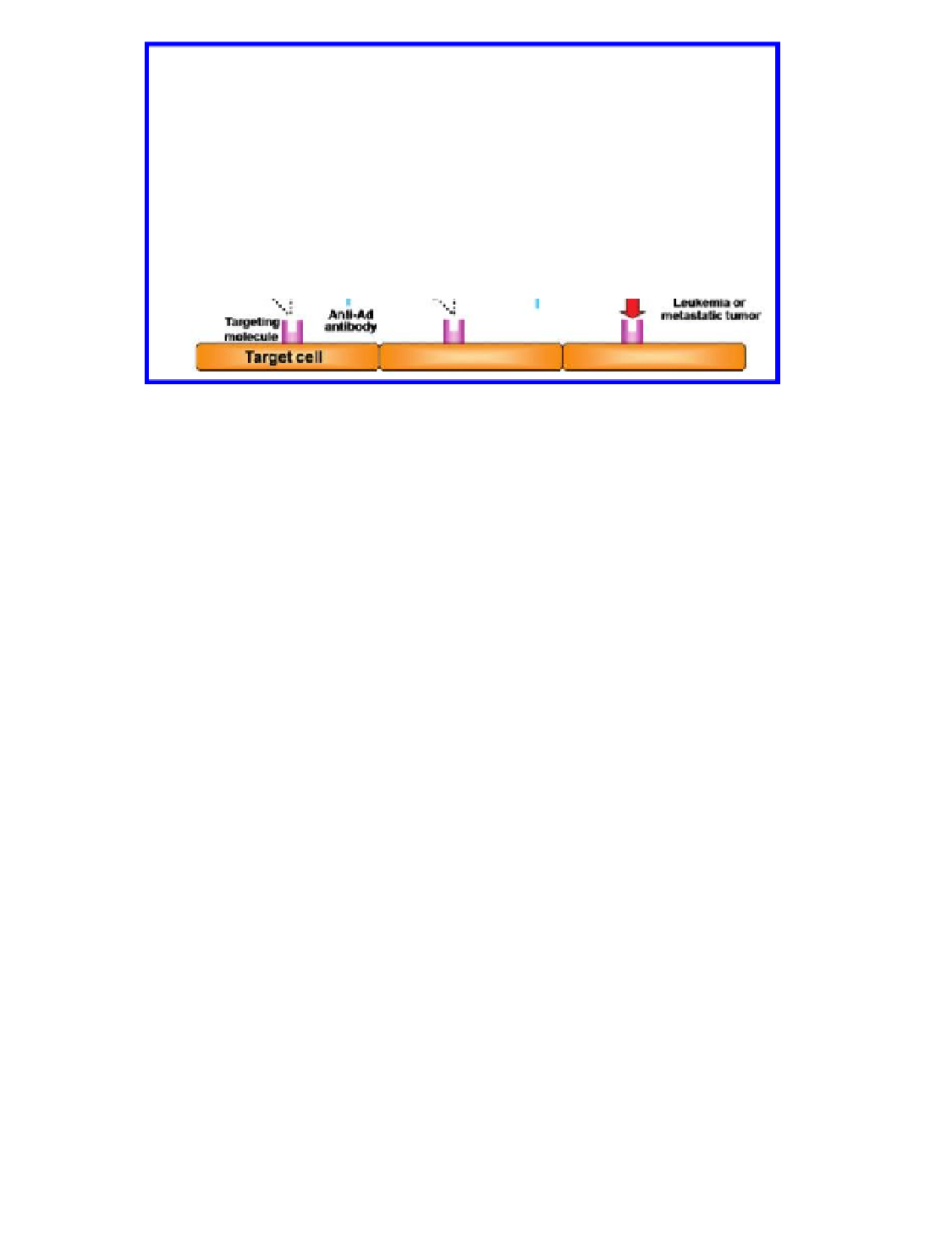Biology Reference
In-Depth Information
Figure 8.2
Characteristics of PEGylated Ads. Non-modified Ads (left panel) bind
to cells expressing the coxackie adenovirus receptor (CAR) and are recognized by
neutralizing antibodies. PEGylated Ads (middle panel) do not bind to cells expressing
CAR and are not recognized by neutralizing antibodies. These Ads, however, also do
not bind to target cells. PEGylated Ads displaying targeting ligands on the periphery
of the PEG chains are shielded from CAR-expressing cells and antibodies. Targeting
facilitates uptake by target cells and gene delivery. Reproduced with permission from
Eto, Y., Yoshioka, Y., Mukai, Y., Okada, N., and Nakagawa, S. (2008) Development of
PEGylated adenovirus vector with targeting ligand,
Int. J. Pharm.
,
354
(1-2), 3-8.
. VACCIne deVeloPMent uSIng VnPs
Because of their highly repetitive molecular structures, VNPs have varying
degrees of immunogenicity (Acosta-Ramirez
et al
., 2008; Kaiser
et al
., 2007;
Lacasse
., 2006, 2007). For vaccine
development, immunogenicity of the carrier is beneficial as it helps to boost
the immune response.
Several classes of anti-viral vaccines have been developed for use in
humans and animals. These include inactivated virus vaccines, attenuated
virus vaccines, VLPs, and chimeric VLPs/VNPs (reviewed in Garcea &
Gissmann, 2004; Grgacic & Anderson, 2006; Ludwig & Wagner, 2007). The
first anti-viral vaccines were based on
et al
., 2008; Raja
et al
., 2003; Smith
et al
inactivated
viruses or
attenuated
strains. Chemicals such as formalin can be used to generate an
inactivated
virus vaccine, whereby the virus does not remain infectious and is thus safe
to use. However, some of the structural or chemical properties of the virus
may be altered as a result of chemical treatment. Alteration or masking (or
blocking) of antigenic surface epitopes can result in inefficiency or failure of
the vaccine, or occasionally lead to induction of an adverse response.





Search WWH ::

Custom Search